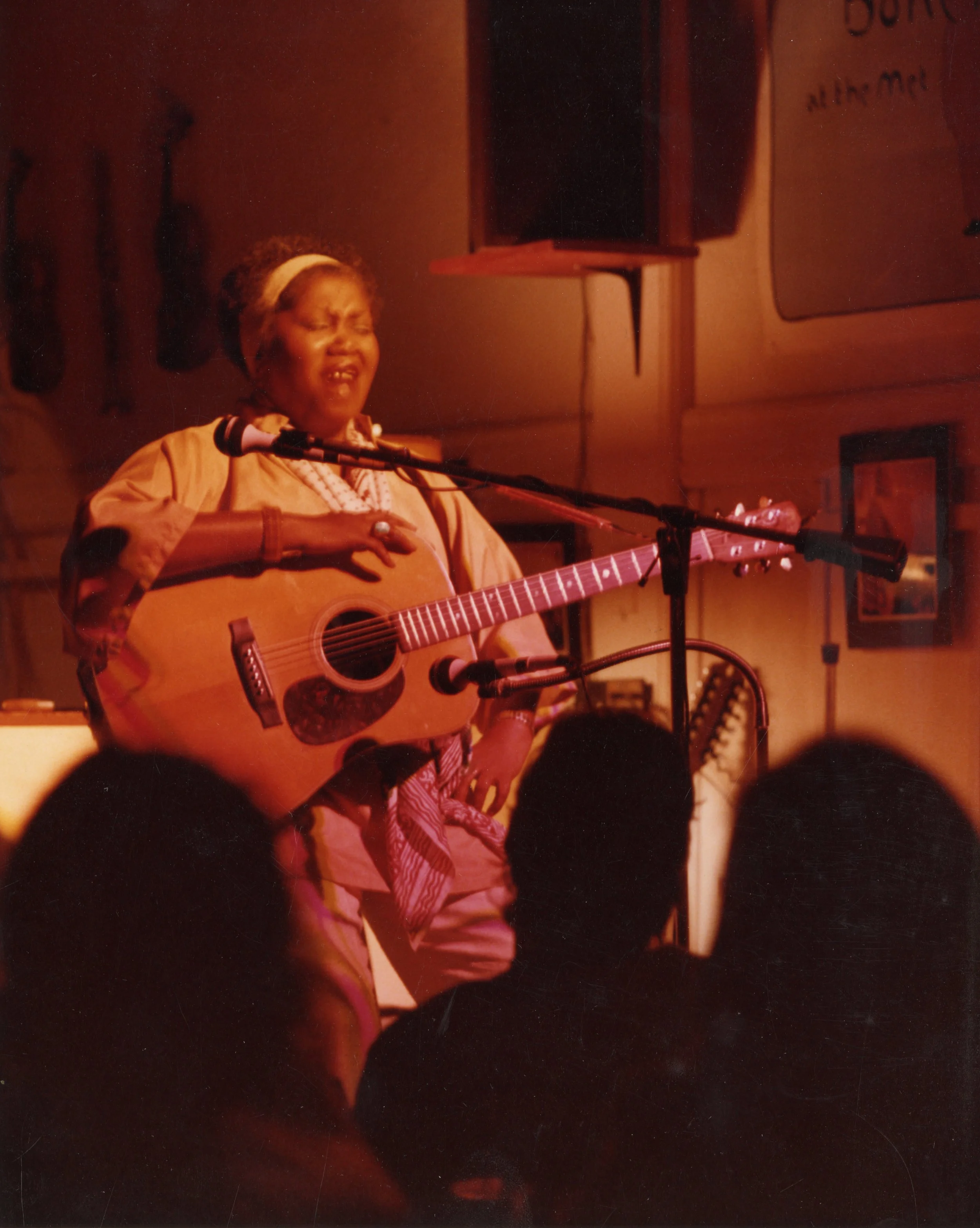ARCHIVE
Ephemera from the long history of the Iron Horse. All images courtesy of the Iron Horse Archive at Forbes Library
History of the Iron Horse
The Iron Horse, founded in 1979, has always been a vital part of Northampton, and the larger Pioneer Valley. A venue unlike any other, where the artists and audience can really see each other, and form a connection, its feel is magnetic. This connection fuels the mission of the venue; to enhance the health and vitality of our community through the power of music.
The Creation
After the closing of local venues the Woodrose Ballroom and the Rusty Nail, Jordi Herold saw a need for a hang-out space for young, creative people. So he and business partner John Riley created it. The Iron Horse Coffeehouse, opened in 1979, was created not solely as a music space, but as a community space. As the Horse grew and changed, the mission remained the same: to foster community. Naturally, music was a large part of the mission. Music creates community and community creates music.
When the Iron Horse Coffeehouse became the Iron Horse Music Hall, not only did its audience and community grow, but so did the space itself. Starting with 60 seats in 1979, it eventually grew to 185, maintaining its intimate, cozy feel even as its capacity increased. In such an intimate space, the artist-audience relationship was prioritized in a way other venues didn't always pull off successfully, and it kept people coming back – audience and artists alike.
What's in a name?
Days before the venue opened, Jordi was brainstorming names at his parents home. His mother, an artist, had just made a welded iron sculpture of a horse. There it was, right in front of him. From there on out, his venue and community space would go by the name of the Iron Horse!
Through the Years
1979
“Music Alone Shall Live'' it said on the wall over the coffee bar when the door opened on February 24, 1979. A band called Clanjamfrey played traditional Irish music to celebrate the opening. The Iron Horse’s original floorplan was a long, narrow hall calling the name of anyone looking for a place to pass the time. The 17-foot-high ceilings featured hand-painted gold detailing that was the pride and joy of John Riley, Jordi’s original business partner who he bought out a year after opening.
During this first year, the first national act was Dan Van Ronk, which then drew in other folks, like Odetta and John Fahey.
The 80s
In the 80s, many people, young people especially, began moving in; a trend which continued and even increased during the next ten years. People came to the area for the culture; to be in a hub of art, music and community. Those who were already settled in Northampton loved it for those same reasons. Combining the old guard with the new made the town what it is today. Local tastemaker radio station WRSI The River went live in 1981, serving those looking for community and thoughtfully-curated music programming, forming a partnership with the Iron Horse that continues to this day.
Hitting its stride, the Horse brought folks from near and far. One of the biggest stars of these years was Suzanne Vega. Shows in 1984 and 1985 drew big crowds, as she played songs from her self-titled first album before it was even out. At one of those fateful shows, she was signed to a record label, members of whom had come specifically to see her at the Iron Horse due to its reputation as a unique and intimate venue, unlike any in New York City.
Other hits in these years included Willie Dixon, Tracy Chapman, Tom Paxton, and Horse classics, Shawn Colvin, 10,000 Maniacs, and London Wainwright.
1989 brought the ten year anniversary of the club, and a celebration at the Academy of Music.
The 90s
Having expanded the club even more to include the adjoining storefront in mid-1989, the capacity was brought up to 185. Stars who graced the stage in the 90s included the Smashing Pumpkins, Townes Van Zandt, NRBQ, Alejandro Escovedo, Archie Shepp, Fela, and even poet Allen Ginsberg, alongside Horse classics Tuck and Patti, the Nields, Martin Sexton, and more. The Nu-Wave Cafe series also got its start in these years, often co-promoted with college stations like Amherst College’s WMUA and Smith College’s WOZQ, bringing popular music to the Valley and drawing younger folks to the Horse.
In 1994, after a fifteen-year stint as owner, Jordi was ready to pass along the venue. Sold to young valley musicians Jo Thomas and Craig Blaine, they ran it for a year before it was bought by Eric Suher in 1995. Suher immediately brought Jordi back on to book shows. Yo La Tengo, Wynton Marsalis, and Arlo Guthrie, amongst others, played during this time.
The 2000s
Jordi stayed on until 2004, and the early aughts brought acts like Beck and David Byrne. The new century in Northampton was brought in with the continued goals of creating community, and hearing good music; always bringing in both classic and contemporary artists, new and old audiences. In the second half of the 2000s, Brandi Carslise, Lesley Gore, Sean Ono Lennon, Ra Ra Riot, and more, played the room. Bill Morrissey, Gaelic Storm, Tuck & Patti and more were constants on the stage.
The 2010s
A phrase you’ll sometimes hear in relation to who’s playing at the venue is “your next new favorite artist,” and the 2010s sure prove this right. Fitz and the Tantrums, the Lumineers, Lianne La Havas, and Lake Street Dive, all played in the early ‘10s.
“Your next new favorite artists” that appeared on the Iron Horse stage in the mid 2010s included Julien Baker, Phoebe Bridgers, Angel Olsen, Courtney Barnett, Chapell Roan and Maggie Rogers all played the room in these years. Then new to the scene, ODESZA brought their electronic sound in May of 2014, one month after their first festival run. And so did classic favorites Lisa Marie Presley, Peter Yarrow (Of Peter, Paul and Mary), and rockabilly legend Wanda Jackson.
The 2020s
Pre-shutdown in March of 2020 due to the COVID 19 pandemic, the Horse fit in a few shows, most notably the Black Pumas, right before their Grammy win for Best New Artist. The last show before the pandemic was a classic: folk singer Richard Shindell.
A few shows took place at the Iron Horse when live music began to come back, but the venue was mostly silent for a couple of years, waiting there on Center Street, until the Parlor Room Collective bought it in late 2023 from Suher.
Today
Today, the Iron Horse exists under the umbrella of the Parlor Room Collective nonprofit. The nonprofit spearheaded a major renovation for increased accessibility, adding 9 bathrooms on the first floor, and an improved patron experience, with a new bar and a new kitchen partnership. Artists returning to the Iron Horse will be pleased to see the new, expanded green rooms (plural!) and enjoy the increased privacy of an artist-only lower level. Audience capacity is now up to 300. Re-opened in May 2024, the venue continues to be an iconic space; with a thriving community rooted deeply in music.











































































